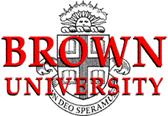|
NSF WORKSHOP on Executive Summary Recent developments in science have advanced capabilities to fabricate and control material systems on the scale of nanometers, bringing problems of material behavior on the nanometer scale into the domain of engineering. Immediate applications of nanostructures and nano-devices include quantum electronic devices, bio-surgical instruments, micro-electrical sensors, functionally graded materials, and many others with great promise for commercialization. The branch of mechanics research in this emerging field can be termed nano- and micro-mechanics of materials. A particularly challenging aspect of fostering research in the nano- and micro-mechanics of materials is its highly cross-disciplinary character. Important studies of relevance to the area have been initiated in many different branches of science and engineering. A subset of these, which is both scientifically rich and technologically significant, has mechanics of solids as a distinct and unifying theme. In order for the mechanics community to focus its thinking on the underlying challenges and to establish an effective, reliable national infrastructure on nano- and micro-mechanics of materials, an NSF workshop on Nano- and Micro-Mechanics of Solids for Emerging Science and Technology was held in Palo Alto, California, October 7-8, 1999. Approximately seventy people, including six foreign delegates and representing a variety of disciplines in engineering and science, participated in the workshop, with the result that many new ideas in research were shared across traditional disciplinary boundaries. The principal findings of the workshop are summarized, and recommendations for development of this area are made. The presentations at the workshop, and the open discussion precipitated by them, revealed the emergence of a range of interesting lines of investigation built around mechanics concepts which have potential relevance to microelectronics, information technology, bio-technology and other branches of nanotechnology. It was also revealed, however, that the study of complex behavior of materials on the nanometer scale is in its infancy. More basic research, which is well coordinated and which capitalizes on progress being made in other disciplines, is needed if this potential for impact is to be realized. In addition to the expected benefit to the target areas, such research invariably advances other technologies, conventional or emerging, through a spill-over effect; this serendipitous benefit can also be anticipated from focused mechanics research in nano technology. Recognizing that this area of nanotechnology is in its infancy, substantial basic research must be done to establish an engineering science base; this link between the discoveries of basic science and the design of commercial devices must be completed to realize the potential of this area. The research undertaken must be scientifically sound in concept and must be rigorously executed to achieve the goals of this area. This will require a commitment to the area that will attract both talented young people and the most accomplished mechanics researchers, and will draw the interest of researchers in other allied areas through its achievements. Such a commitment to nano- and micro-mechanics will lead to a strong foundation of understanding and confidence underlying this technology based on capabilities in modeling and experiment embodying a high degree of rigor. Such a foundation will best serve the development of the technologies and the field of engineering as a whole. The potential of various concepts in nanotechnology will be enhanced, in particular, by exploring the nano- and micro-mechanics of coupled phenomena and of multi-scale phenomena. Examples of coupled phenomena discussed in this workshop include modification of quantum states of materials caused by mechanical strains, ferroelectric transformations induced by electric field and mechanical stresses, chemical reaction processes biased by mechanical stresses, and change of bio-molecular conformality of proteins caused by environmental mechanical strain rates. Multi-scale phenomena arise in situations where properties of materials to be exploited in applications at a certain size scale are controlled by physical processes occurring on a size scale which is orders of magnitude smaller. Important problems of this kind arise, for example, in thermo-mechanical behavior of thin-film nano-structures, evolution of surface as well as bulk nano-structures caused by various material defects, nano-indentation, nano-tribological response of solids, and failure processes of MEMS structures. A critically important aspect of the commitment required for this area is in education, that is, the preparation of young people for contributing roles in an area of research that will be changing continuously. This will require that decisions on content of graduate programs in mechanics within universities should be guided to some extent by broad national research needs, and that the tools of mechanics which result from research must be made more readily accessible to those nonspecialists who can benefit from their application. Nanotechnology is in its infancy and the success of the field can be achieved by advancing capabilities of modeling and experimentation in nano- and micro-mechanics of materials. In modeling, it is necessary to develop reliable computational schemes for the study of coupled processes involving multiple length scales which are mathematically rigorous. In experimentation and laboratory observation, diverse experimental techniques must be developed which go beyond the simple reduction in size of present standard testing techniques; new test methods must be developed which lend themselves to the evaluation of material behavior at the nano- and micro-scales. Technologically rich problems must be actively researched by studying the nano- and micro-mechanics of coupled phenomena and of multi-scale phenomena. For these tasks, cross-disciplinary research and education must be initiated and cultivated. Specific examples of directions for research and education in mechanics are described in the report. L. B. Freund and K.-S. Kim, Brown University Huajian Gao and W. D. Nix, Stanford University A. G. Evans and Zhigang Suo, Princeton University R. M. McMeeking, UC Santa Barbara November, 1999
CONTENTS FINDINGS As transcendental technologies [Wong, 1999] of recent development include "Micro-electronics Technology," "Information Technology" and "Bio Technology," an essential technology to maintain the advancement of these transcendental technologies, which may lead to another industrial revolution, has been recently identified as the "Nano- technology[NNI, 2000]. It is understood that the meaning and origin of the term "Nanotechnology" is based on sub-micron feature size, atomic or molecular fabrication strategy of building material structures atom by atom, or distinct quantum mechanical functions available at the nanometer-scale [NNI, 2000]. In microelectronics area the nanotechnology is a necessary technology to extend the scalability of the trends in computer process power, Moore's Law, into the foreseeable future [Moore, 1995]. It is also regarded as an enabling technology of manufacturing various quantum devices and their applications to information science and technology. Furthermore, the nanotechnology is believed to make significant advancement of biotechnology as well, for example, in drug delivery, microsurgery, gene therapy and artificial photosynthesis, etc. The major development of nanotechnology depends on the advancement of material-processing and fabrication capabilities for manufacturing new devices and material structures, with proper probing, sensing and control capabilities for various physical, chemical and biological processes in nanometer scale. Such capabilities will rely on appropriate understanding of the material behavior and principles of physical processes in that size scale. The branch of mechanics research in this emerging field can be termed "nano- and micro-mechanics of materials". Thus, a major enabling engineering science of nanotechnology is the Nano- and Micro-Mechanics of materials. The terminology of nanomechanics is embracing many implicit meanings related to the mechanics of physical processes and material behavior at the length scale of nanometers. This length scale is very close to atomic and molecular size scale and thus the mechanics problems in this field are associated with "atomic spatial resolution and transition from quantum to continuum mechanics via atomistics," "richness of underlying electronic degree of freedom for the physical processes in this length scale," "abundant sources of instabilities and localization of motion and deformation" and "non-equilibrium processes and small-number statistics/fluctuations for collective motions of atoms and defects." While the terms nano and micro are often used to indicate length scales, for example, nano-tubes, nano-particles, nano-structures, micro-electronics, micro-gauge and micro-scope, etc., the term "micromechanics" usually means mechanics of (immediate) underlying mechanisms of physical processes and material behavior at any length scale. Examples include mechanics of dislocation motion, phase transformation, mass and vacancy diffusion, void growth for plasticity and fracture. As the terms nano and micro in this field imply coupled multi-physical processes and scale bridging of the physical processes at the nanometer length scale, the Nano and Micro-Mechanics is a meeting place of various disciplines. The coupled multi-physical processes encompass mechanical (mass and motion), electronic (charge transport), magnetic, optical (electromagnetic field), chemical and biological (collective multi-physical) processes. Due to the diversity of physical processes in this length scale, important studies of this field have been initiated in many different branches of science and engineering. Therefore, a particularly challenging aspect of fostering research in this area is its highly cross-disciplinary character. A subset of these, which is both scientifically rich and technologically significant, has mechanics of solids as a distinct and unifying theme, which have potential relevance to microelectronics, information technology, bio-technology and other branches of nanotechnology. The study of complex behavior of materials on the nanometer scale is in early stage. More basic research, which is well coordinated and which capitalizes on progress being made in various disciplines, is needed if the potential of the nanotechnology for impact is to be realized. In other words, substantial basic research must be done to establish an engineering science base; this link between the discoveries of basic science and the design of commercial devices must be completed to realize the potential of this area. The research in this area will invariably advance other technologies, conventional or emerging, through a spill-over effect; this serendipitous benefit can also be anticipated from focused mechanics research in nano technology. This will require a commitment to the area that will attract both talented young people and the most accomplished mechanics researchers, and will draw the interest of researchers in other allied areas through its achievements. Such a commitment to nano- and micro-mechanics will lead to a strong foundation of understanding and confidence underlying this technology based on capabilities in modeling and experiment embodying a high degree of rigor. Such a foundation will best serve the development of the technologies and the field of engineering as a whole. Finally, it is found in this workshop that the potential of various concepts in nanotechnology will be enhanced, in particular, by exploring the nano- and micro-mechanics of coupled multi-physical and multi-scale phenomena. Examples of coupled multi-physical phenomena discussed in this workshop include modification of quantum states of materials caused by mechanical strains, ferroelectric transformations induced by electric field and mechanical stresses, chemical reaction processes biased by mechanical stresses, and change of bio-molecular conformality of proteins caused by environmental mechanical strain rates. Multi-scale phenomena arise in situations where properties of materials to be exploited in applications at a certain size scale are controlled by physical processes occurring on a size scale which is orders of magnitude smaller. Important problems of this kind arise, for example, in thermo-mechanical behavior of thin-film nano-structures, evolution of surface as well as bulk nano-structures caused by various material defects, nano-indentation, nano-tribological response of solids, and failure processes of MEMS structures. Modeling Aspects Experimental Aspects Design and Manufacturing Aspects RECOMMENDATIONS Research Education Applications ACKNOWLEDGMENT REFERENCES APPENDICES Appendix A. Workshop Program Appendix B. Participants Appendix C. Abstracts Appendix D. Discussions
|


|
Workshop Report |

